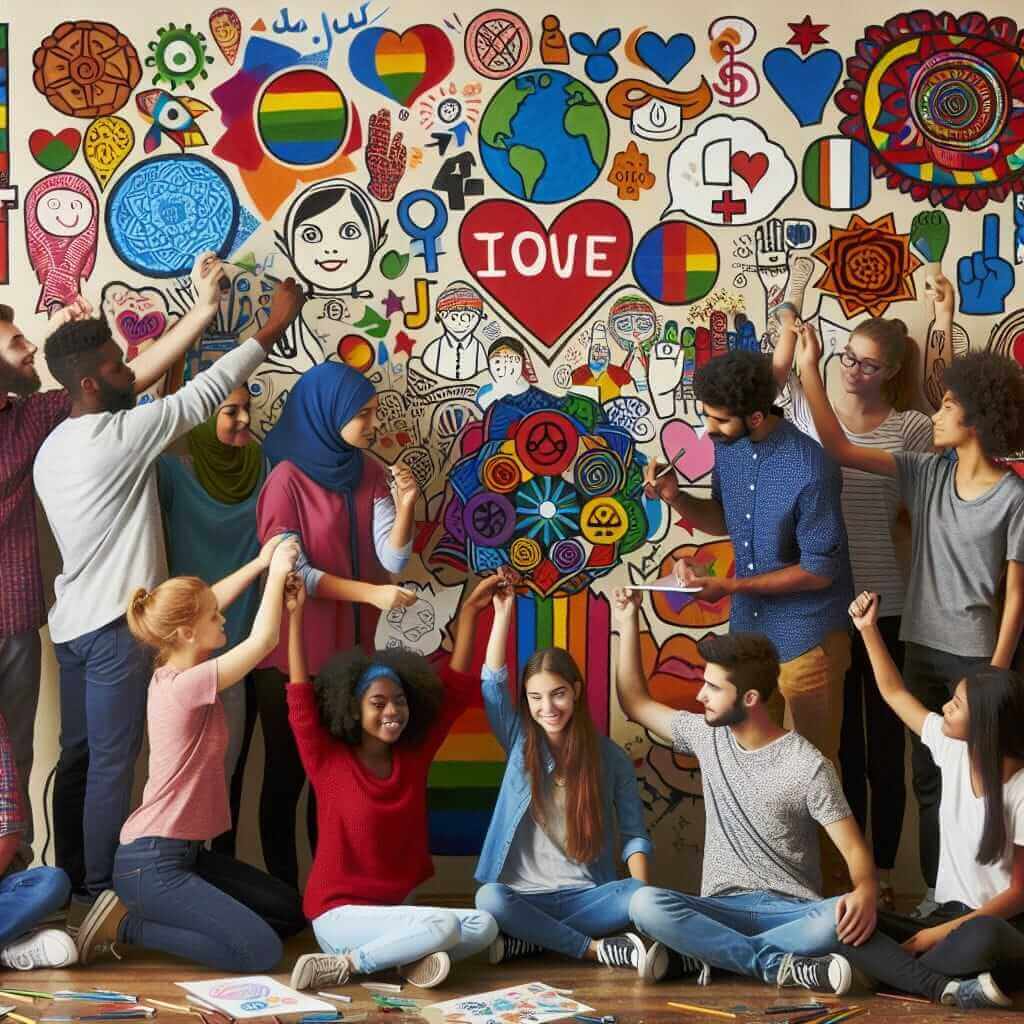The IELTS Speaking test evaluates your ability to communicate effectively in English under timed conditions. During the examination, you’ll be assessed based on four key criteria: Fluency and Coherence, Lexical Resource, Grammatical Range and Accuracy, and Pronunciation. One of the common questions you may encounter could be related to creativity, such as “Describe a time when you were involved in a creative process.” This question not only tests your language skills but also your narrative and descriptive abilities.
In this guide, we’ll explore how to answer this specific question effectively by providing a comprehensive structure, detailed examples, and strategic tips to help you achieve a high band score.
Part 1: Introduction and Interview
The first part of the IELTS Speaking test typically involves answering personal questions about familiar topics. Here are examples of questions you might encounter:
Common Questions in Part 1
- Do you like drawing or painting?
- Have you ever attended an art class?
- What kind of creative activities do you enjoy?
Example Question and Suggested Answer
Question: Have you ever attended an art class?
Suggested Answer:
“Yes, I have attended several art classes. During high school, I took part in a weekly art workshop where we learned various techniques like sketching, watercolor, and oil painting. I particularly enjoyed learning about color theory and how to mix paints to achieve the perfect shade. These classes not only enhanced my creative skills but also provided a relaxing escape from my regular academic schedule.”
Part 2: Long Turn
In Part 2, you will be given a cue card with a topic and some bullet points to cover in your response. You will have one minute to prepare and then speak for about two minutes.
Example Cue Card
Cue Card:
Describe a time when you were involved in a creative process.
You should say:
- What the project was
- What your role was
- How you went about it
- And explain how you felt about the experience
Suggested Response
“One particularly memorable creative process I was involved in was designing a mural for my school’s art room. The project was a team effort, and I was nominated as the team leader. We began by brainstorming ideas and sketches, aiming to capture the spirit of our school community.

We decided on a theme that represented unity and diversity, so we incorporated various cultural symbols and vibrant colors. My role included organizing group meetings, assigning tasks based on each member’s strengths, and ensuring that everyone’s ideas were included.
We went about the process systematically. First, we collected reference images and created a detailed plan. Then, we spent weekends and after-school hours bringing our vision to life. It was a meticulous process that required patience and collaboration.
Throughout the project, I experienced a mix of excitement and nervousness. Not only did this project enhance my leadership and artistic skills, but it also fostered a deeper sense of community among us. Seeing the final mural on the wall was incredibly fulfilling and made all our hard work worthwhile.”
Part 3: Two-Way Discussion
Part 3 extends the topic discussed in Part 2 and involves more abstract and complex questions. The examiner will engage you in a deeper discussion to explore your opinions and analytical skills.
Example Discussion Questions and Answers
Question: Why do you think creativity is important in our society?
Suggested Answer:
“Creativity plays a crucial role in our society as it drives innovation and problem-solving. It allows individuals to express themselves and come up with unique solutions to everyday challenges. In the workforce, for instance, creativity enhances productivity and can lead to groundbreaking developments in technology and the arts. Furthermore, embracing creativity can lead to a more fulfilling and balanced life, as it provides a medium for emotional expression and stress relief.”
Question: How can educational institutions encourage creative thinking among students?
Suggested Answer:
“Educational institutions can encourage creative thinking by integrating arts and project-based learning into the curriculum. Providing students with opportunities to work on interdisciplinary projects enables them to apply their knowledge creatively. Additionally, schools can foster a creative environment by celebrating creative achievements, offering workshops, and giving students autonomy in their learning process. Encouraging collaboration and critical thinking exercises also plays an essential role in nurturing creativity among students.”
Vocabulary and Structures for High Scores
Key Vocabulary
- Nominated (/ˈnɒmɪneɪtɪd/): Chosen or appointed to a specific role.
- Fostered (/ˈfɒstərd/): Encouraged or nurtured development.
- Autonomy (/ɔːˈtɒnəmi/): Independence or freedom in decision-making.
- Fulfillment (/fʊlˈfɪlmənt/): A sense of satisfaction or accomplishment.
- Innovation (/ˌɪnəˈveɪʃən/): The act of introducing new ideas or methods.
Example Sentences
- The team leader nominated members to take charge of different sections of the project.
- The collaborative environment fostered our creativity and led to an impressive final product.
- Students should be granted a degree of autonomy to explore subjects that interest them.
- Completing the project provided me with a deep sense of fulfillment.
- Technological innovation was primarily driven by creative thinking.
Examiner’s Advice
Tips to Practice
- Speak Clearly and Fluently: Practice speaking slowly and clearly to improve fluency. Recording yourself can help identify areas for improvement.
- Expand Your Vocabulary: Consistently learn and incorporate new words into your speaking practice.
- Practice with Cue Cards: Regularly practice with sample cue cards to get comfortable with the format and improve your ability to organize your thoughts quickly.
- Engage in Discussions: Participate in group discussions to enhance your analytical skills and confidence.
By following these steps and using the provided examples, you will be better prepared to handle the IELTS Speaking test, particularly questions related to creative processes.